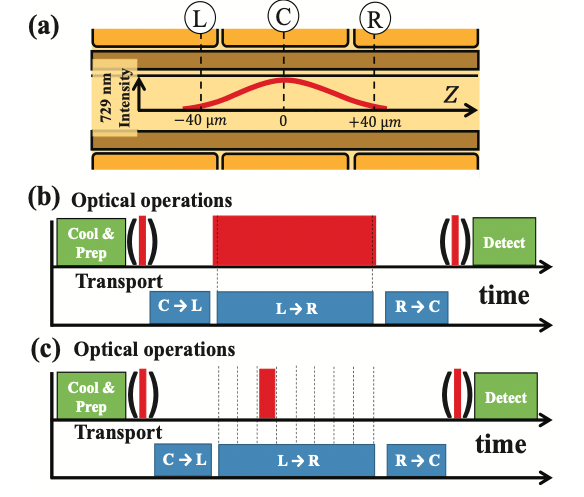Scientists at the Georgia Tech Research Institute (GTRI) have demonstrated the feasibility of a new approach that moves trapped ion pairs through a single laser beam, potentially reducing power requirements and simplifying the system for creating entangled qubits.
The team has described implementing two-qubit entangling gates by moving calcium ions held in a surface electrode trap through a stationary bichromatic optical beam. Maintaining a constant Doppler shift during the ion movement required precise control of the timing.
Measurements showed that the entangled quantum state of the two qubits transported through the optical beam had a fidelity comparable to entangled states produced by stationary gates performed in the same trapping system. The experiment used an optical qubit transition between an electronic ground state and a metastable state of 40Ca+ ions within a surface trap, a setup which allowed both one-qubit and two-qubit gates to be performed using a single beam.
The researchers moved the pair of trapped ions by precisely varying the electrical confinement fields in the trap by controlling the voltages applied to adjacent electrodes. The ions themselves have an electrical charge, a property which makes them subject to the changing electrical fields around them.
Moving the ions into a single beam has at least three potential advantages. For one, if a single beam can be reflected back and forth across a trap, that one beam could interact with many ions, reducing the need for multiple beams and the power — and control complexity — they require.
Another advantage is that the intensity of the interaction can be controlled by the movement of ions through the beam rather than by adjusting the laser pulses. And because the beam intensity smoothly rises and falls as the ions move through different portions of it, problems of off-resonant coupling can be reduced.
But there are also disadvantages. Because the ions move through the beam, they don’t remain in the most intense portion of it for long, but are exposed to power that ramps up and down as they move. That means a more intense beam must be used to provide a specific amount of power to the ions.
The paper has been published in the journal Physical Review Letters.



